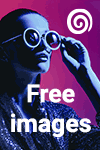Forget the Scissors, Microsoft Research Makes It Easier to Create Digital Photo Collages Seamless digital photo collaging at your fingertips with AutoCollage.
CAMBRIDGE, UK — 4 Sept 2008 — Microsoft Research today launched AutoCollage 2008, a desktop application that allows users to easily compile a set of individual photographs into one seamless collage. In just a few clicks, people can transform an unwieldy group of photos — for example, of an event such as a wedding or holiday — into a single collage image that can be printed; used in e-postcards, web pages or desktop backgrounds; or e-mailed to family and friends.
Available to trial from the Microsoft Research download site at http://research.microsoft.com/autocollage/Download.aspx, AutoCollage is an advanced computer vision and image processing program that assembles pictures into a seamless collage using methods such as object recognition and face detection. Having automatically identified interesting parts of pictures, AutoCollage combines the separate pictures into a composite collage by deliberately following natural features as a boundary between images.
“The most significant feature that differentiates AutoCollage is that it offers exceptionally sophisticated blending technology for photographs, powered by state-of-the-art computer vision techniques,” said Alisson Sol, development manager at Microsoft Research Cambridge. “It’s great that we can give everyone the opportunity to play with and use this compelling technology, and we’re looking forward to seeing what collages they come up with.”
AutoCollage considers three main criteria to ensure that it chooses the best images to feature in the collages it creates:
• Choosing images that are most representative of the overall theme (eg, avoiding duplications, choosing people or groups of people)
• Laying out the images in an interesting way (eg, ensuring one image overlay does not dominate the collage, ensuring important parts of the photo are visible)
• Blending the images together so the joins aren’t visible
“We’ve tested tens of thousands of different collages in the course of our research, and it’s really exciting that the positive feedback we’ve received from our user studies shows we’ve answered these challenges successfully,” said Carsten Rother, researcher in the Computer Vision Group at Microsoft Research Cambridge.
“AutoCollage is a great way to showcase many favourite holiday moments in just a few collages — to use in my digital scrapbook pages or online photo book,” said Amy Edwards, founder of Scrapbook-Bytes.com (http://scrapbook-bytes.com/).
AutoCollage started as a research project at Microsoft Research Cambridge, UK, in 2005 and was recently transferred into the Cambridge Incubation team, in order to ensure the technology was ready for consumers to use and had adequate support. It also features technology developed by Microsoft researchers in China and Redmond, Washington, US.
“AutoCollage is a great example of some very innovative computer science research from Cambridge and our partner labs in the United States and China,” said Andrew Herbert, managing director of Microsoft Research Cambridge. “We are furthering our commitment to transfer scientific innovations by providing consumers with access to technologies that are on the cutting edge of computer science.”
AutoCollage runs on Windows Vista and Windows XP SP2 and later, and is available worldwide through a 30-day free trial. An unrestricted version is available to purchase in the UK and US only at this time from http://research.microsoft.com/autocollage/Download.aspx.


Source: Microsoft
Friday, September 5, 2008
Microsoft AutoCollage 2008
Labels:
AutoCollage,
Microsoft,
photography,
scrapbook
Subscribe to:
Post Comments (Atom)























No comments:
Post a Comment